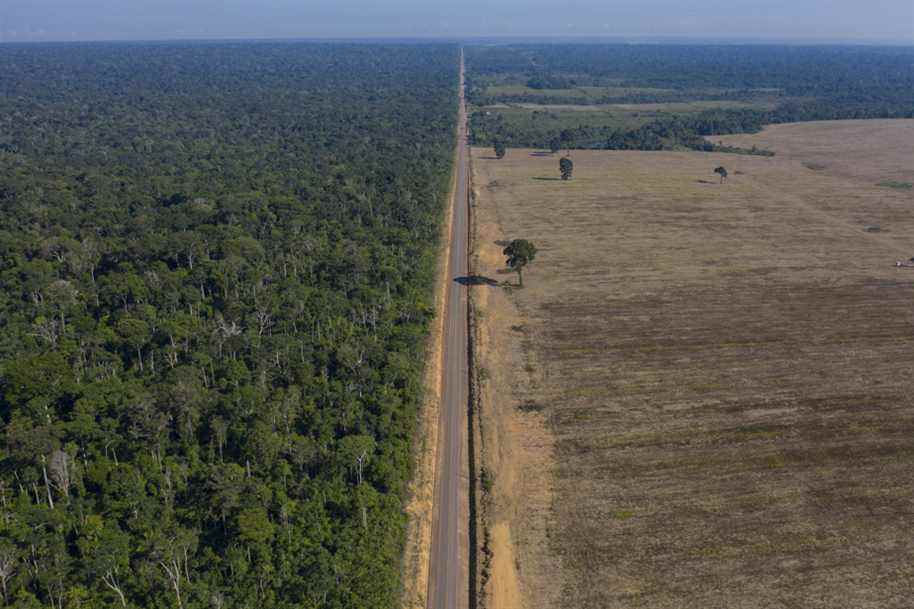(Paris) Vast swaths of tropical forests have been burned or cut down in 2021, replaced by crops or livestock, particularly in Brazil, researchers warned on Thursday, as climate change complicates the preservation of forest cover.
Posted at 8:28
About 11.1 million hectares of forest were lost in the tropics last year, including 3.75 million in primary forests, according to the annual study by Global Forest Watch (GFW), the World resources institute ( WRI) and the University of Maryland.
“It’s 10 football pitches per minute. And it’s been going on for a year”, warns Rod Taylor, who directs the WRI’s forest program, speaking of primary forests.
The destruction of these intact forests released 2.5 gigatonnes of CO2 into the atmosphere in 2021, the equivalent of India’s annual emissions, according to the researchers’ calculations.
More than 40% of the primary forest lost in 2021 was in Brazil, with approximately 1.5 million hectares cut down or gone up in smoke, followed by the Democratic Republic of Congo with nearly 500,000 hectares destroyed. Bolivia has seen its highest level of forest destruction since the measures began in 2001, at nearly 300,000 hectares.
Beyond the tropics, the report shows that boreal forests in the Northern Hemisphere have suffered the greatest loss of forest cover in two decades.
Snowball effect
In Russia alone, an exceptional fire season led to the loss of 6.5 million hectares of forest, a record.
Researchers warn of a potential ‘snowball effect’, where more frequent fires lead to more CO2 into the atmosphere, fueling global warming that increases the risk of wildfires.
These data are published as 141 world leaders pledged at COP26 in Glasgow at the end of 2021 to “halt and reverse forest loss by 2030”.
The destruction of primary forest will have to be greatly reduced each year until the end of the decade to achieve this goal, warn the researchers.
“Climate change itself makes it more difficult to maintain the forest we still have,” said Frances Seymour of WRI, adding that this shows the obligation to reduce greenhouse gas emissions.
A recent study suggests that the Amazon rainforest may be closer to a “tipping point” than previously estimated. It could turn into a savannah and release vast amounts of CO2 in the air.
“Disaster”
Brazil, home to around a third of the world’s remaining primary rainforest, has seen the rate of destruction of its forests accelerate in recent years.
Destruction not caused by fire, often linked to the creation of agricultural areas according to WRI, increased by 9% compared to 2020.
This percentage exceeds 25% in some states in the western Brazilian Amazon.
“We already knew that these losses are a disaster for the climate. They are a disaster for biodiversity. They are a disaster for indigenous peoples and local communities”, insists Frances Seymour, stressing that recent studies show that forests also help to cool the atmosphere.
In Indonesia, on the other hand, actions by the government and the private sector have slowed the loss of primary forest by 25% compared to 2020, for the fifth consecutive year, after very high levels.
The end of a temporary freeze on new palm oil operations and palm oil prices at their highest in 40 years could, however, undermine these efforts, according to WRI.
“Clearly we are not doing enough to provide incentives to those in a position to halt forest loss, to protect the remaining tracts of primary forest,” says Frances Seymour.
